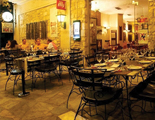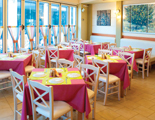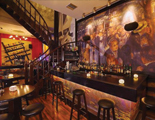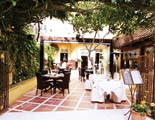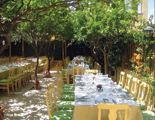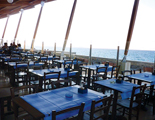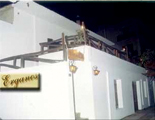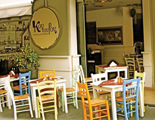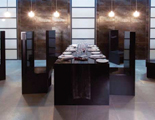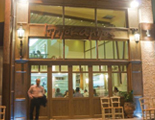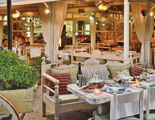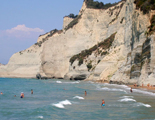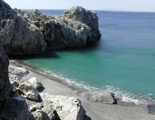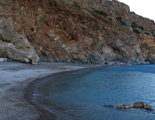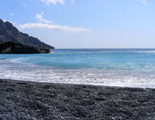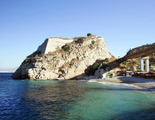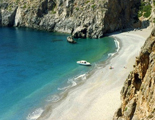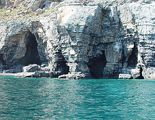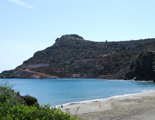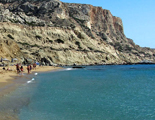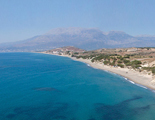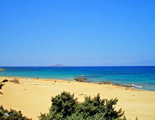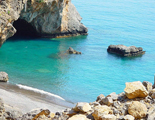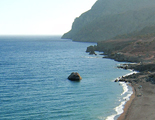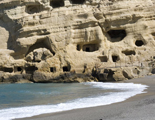 Heraklion Travel Guide
Heraklion Travel Guide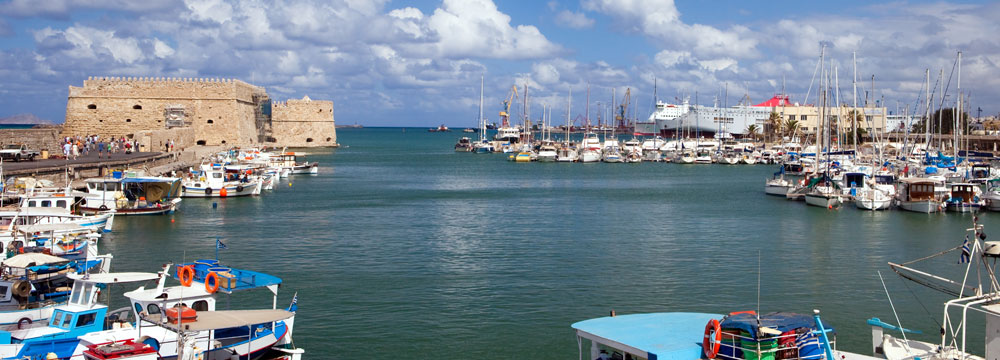
The name of the largest city of Crete comes from Ideos Hercules, one of the Kourites soldiers that protected the entrance of the cave “Ideon Andron”, where Zeus was raised.
According to archeological findings the settlement of Heraklion was formed at approximately the 9th century B.C. at the top of the hill where the contemporary city centre lies today. The region was the natural sea port of Knossos to the north.
Between the 4th and 9th century the town Heraklion is named under Kastro (fortress), suggesting a fortification. Crete was a province of Byzantium. The only information about the 7th and 8th centuries is about natural disasters and pirate attacks. Following the crisis in Byzantium the island was conquered around 824 A.D. by Arabs who were expelled from Spain.
The town became the base of the Arab pirates, entrenched by a big ditch, from where \ the name Khandaq (Candia in Latin) derives. After many attempts to free the island, it was finally liberated by Nikiforos Fokas in 961 A.D.
The crusaders conquered Konstantinoupolis in 1204 and Crete was sold to the Venetians, who dominated the island until 1669. This new domain was named Regno di Candia (kingdom of Candia), with the town Candia (Khandaq or Heraklion) serving as its capital. During the first two centuries, the locals incited revolutions against the Venetians and in 1363, an effort known as “Movement of Saint Titus”, was violently suppressed.
During the last period of the Venetian sovereignty (after 14th century) the locals were given the freedom to develop their trade, culture and religion. The Cretan Renaissance is a fine example of this era (16th century).
In 1645 the fifth war between the Turks and the Venetians began. The Turkish army conquered the entire island except for Candia which fell after 22 years of siege (1647-1669). The town was finally named Heraklion in the beginning of the 19th century and it was destroyed by an earthquake in 1856, Heraklion was then reconstructed under the pattern of a typical Turkish town.
In 1913 the Island of Crete officially became part of Greece. After the Asia Minor Catastrophe in 1922, the population of the city increased, due to the refugees from the former Greek cities. During the Second World War the city suffered from continuous and exhausting air bombing. Its resistance against the Germans was remarkable.
According to Greek mythology, Daedalus was a famous architect, sculptor, craftsman and inventor in ancient Athens. He was exiled by the highest court because he murdered his apprentice and nephew Talos, whom he envied for his ingenuity. In search of a refuge, the king of Crete Minos, son of Zeus and Europa, welcomed him with the task to build the Palace of Knossos. This is how the labyrinth was constructed. The Palace of Knossos is a huge building with almost 1300 rooms, courtyards and store rooms.
However, according to a version of the myth, Daedalus fell in the disfavour of the king because he gave his daughter, Ariadni, a thread, which she gave to Theseus, to help him get out of the labyrinth, after killing the mythical Minotaur creature. Another version mentions that Daedalus helped Passifae, the king’s wife, after she begged him, to mate with a bull (this is how Minotaur was born).
Other myths support that Daedalus and his son Icarus were restricted into a high tower, so as not to reveal the secrets of the labyrinth. Daedalus thought that the only way of escaping was by air. He constructed wings made of feathers, tied together with string and glued with wax. After they managed to escape, Icarus neglected his father’s advice not to fly too high. Therefore the sun caused the wax to melt and Icarus with dismantled wings fell into the sea and drowned.
Knossos is the most important archeological site in Crete, located 5 km southeast from Heraklion. It was the Palace of king Minos and according to mythology, home of the Minotaur. This palace was reconstructed by the archeologist Arthur Evans. It was built around 1900 B.C, over the remains of a Neolithic settlement.
A part of the palace was destroyed about in 1700 B.C probably by an earthquake. A new destruction occurred in 1450 B.C., probably caused by the explosion of Santorini’s volcano. The final destruction by a big fire came around 1350 B.C. The city was basically rebuilt and was standing through the classical and Roman periods.
This is the second most important archeological site in Crete after Knossos, located 62 km southwest of Heraklion. The King of Phaestos was Rodamanthys, brother of King Minos. Phaestos town had two ports, Matala and Kommos. The first palace was built around 1900 B.C, but was twice destroyed like Knossos, once in the 18th century B.C probably due to an earthquake and the second around mid 15th century. Phaestos was reconstructed after both destructions only to be torn down again by the invading Achaeans. Phaestos’ large parts were still standing though, until its enemy city, Gortyn, finally brought them down too at about 160 B.C.
The archeological site of Agia Triada is located 3km west from Knossos. The palace was built around 1600 B.C and destroyed 1450 B.C. According to a theory, it was the summer residence of the king of Phaestos, but others support that it was used as his base after the destruction of Phaestos. The findings brought to light a place used as temple, a vault, store rooms, an agora (marketplace), a dome-like tomb and family tombs too. Many of the findings of Agia Triada settlement are exhibited in the Archeological Museum of Heraklion.
Archanes
The ancient city Archana prospered between 2500 and 1400 B.C. A manor house, a cemetery and a Minoic temple were found in the area. The palace was destroyed around 1450 B.C., like the other Minoan cities. In the area was excavated a large cemetery, with findings including human skeletons, vessels, stamps, figurines, golden coins and more, most of which exposed in the Archeological Museum of Heraklion.
Malia
Only in a distance of 3 km east from the town Malia another ancient city existed, the name of which is still unknown. Sarpidonas, brother of King Minos and Rodamanthys is believed to have been its king. The town was built around 1900 B.C, destroyed in 1700 B.C and, finally, in 1450 B.C. The excavations brought to light store rooms containing jars and vessels, workshops, a room with weapons, an altar and various other objects.
Tylissos
The archeological site of ancient Tylissos is located 14 km west from Heraklion. Three big buildings, probably houses and a water supply network were found there and most of the area’s findings, such as vessels, coins, inscribed plates, tools, utensils, are housed in the Archeological Museum of Heraklion.
Gortyn was a very powerful city and also the capital of Crete during the Roman and early Byzantine period. It was a great enemy of Knossos and Phaestos. It avoided disaster by allying with the Romans who invaded the island in 68 A.D. In 828 A.D Gortyn was destroyed by the Arabs who conquered the island.
The excavations brought to light a citadel, a temple of God Apollo, a theatre, a temple of Isis and one of Serapes, a stadium and an amphitheatre. In the road to Phaestos are found the ruins of its agora, the temple of Asklipios and a conservatory. In the archeological site there is a Museum exposing the findings of the area.
The exceptional Aquarium of Crete in Heraklion city hosts hundreds of sea species including fish and other organisms in a well organized space with audio visual equipment, ideal for introducing you to the magnificent sea ecosystem and its marvels. The Cretaquarium also features an audio guiding system giving valuable details and information for each of the tanks and the species it includes.
For more information, please visit: www.cretaquarium.gr
Serving as the ancient port of Phaestos and Gortyn towns, Matala is most probably the most ancient village on Crete. The favorite gathering place for hippies in the ‘70s, Matala boast numberless natural caves which were at first used as worshipping and inhabitance places.
Later on they were mostly used as tombs. Matala caves can be visited even nowadays as they are one of the most important sightseeing spots of Heraklion and they are under the Archeological Service’s protection due to the great importance and valuable information they give for our ancestors.
South of Amnissos, located east from Heraklion, the Cave of Eilythreia is found. It is believed to have been the birth place of Eilytheia, the daughter of Zeus and Hera and has served, according to tradition, as a place of safe and painless delivery of babies by women. A temple dedicated to Eilytheia is also found here, coming to verify the truth behind the legend.
It was built by the Venetians around 1211 A.C. and it was initially named “Rocca Al Mare”, meaning Rock at Sea, at is literally built right on the sea. The fortress used to protect the old harbour by sea waves.
During the Ottoman occupation it served as prisons and many local heroes of the resistance have died within its dungeons. A beautiful structure destroyed by an earthquake in 1303 and reconstructed in its present form a few years after.
Agiofarago, meaning the Holly Gorge in Greek, is located south from the monastery Odigitria and west of Kali Limenes village, in the south part of the prefecture. It exits to the Libyan Sea at a very beautiful beach and it was named after the hermits who used to go there and get isolated from the rest of the world. Throughout the route you can observe the huge vertical rocks surrounding the place and the natural caves curved into them. Just before the exit of the Gorge you will meet the church of Agios Antonios, part of which is nestled within one of the caves.
You can reach the gorge can by boat from Kokkinos Pyrgos or Kali Limenes and by car following the road from Heraklion to Moires and then direct to Sivas village and Kali Limenes, passing from Odigitria monastery first. The gorge can be crossed easily in about 90min.
Located in Psiloritis Mountain the gorge of Agios Nikolaos, or Rouvas gorge is rich in flora and fauna extending for about 4 km. Part of it is suitable for activities, such as climbing, hiking, wild life observance etc. Inside the gorge grows the so called Rouvas forest, with very old, tall trees, reaching up to 15m.
The forest covers a surface of 30.000 m2 and consists of many different kinds of trees, such as oaks, maples, cypresses, plane trees, pines, etc. It is considered to be a very special kind of forest because of the size of yews, that grew up to be much bigger than bushes usually are, most probably due to the lack of human presence and activities.
Martsalos Gorge
This gorge exits to the south, on the beach of Martsalos to the Libyan Sea. On this beach Apostle Pavlos is believed to have disembarked on his journey to Rome. In the middle of the gorge there is a very old small church built in the rock, dedicated to Panagia (Holy Mary). Inside the gorge there is also a colony of the scarce “theofrastos” palm trees.
Karteros Gorge
The gorge of Karteros is one of the longest in the region, boasting a length of approximately 12.5km and being traversed by the river Karteros. The endings of the nearby gorges of Kounavon and Astrakon merge at some point with Karteros Gorge too. Natural springs, a river and small waterfalls form the whole scenery, together an old aqueduct used by the city of Heraklion.
The visitor here is introduced to the natural environment and ecosystem of Crete through realistic representations of natural habitats, forests, caves and mountains. The permanent exhibition includes also presentations and tributes to animals under extinction and a rich photographic archive.There are halls with fossils, rocks and minerals, describing the geological history of the island.
A tribute to the Minoan period represents the everyday life of the Minoans and their relation with nature. A reproduction of authentic palaioanthropologic material with photographs and maps illustrates the evolution of man until the first signs of human civilization.There is also a botanical garden with plants of Crete and the Mediterranean and a projection hall.
For more information, please visit: www.nhmc.uoc.gr
One of the most important museums in Greece housed in a building of modern architecture in Heraklion. It consists of 20 halls and its collection includes findings from various areas of Crete, covering 5500 years of history from the Neolithic till the Roman period. The exhibits are presented following a chronological order according the history of the Minoan Civilization.
Address: Xanthoudidou 2, Heraklion
Tel: +30 2810 279000, email: [email protected]
The museum was founded in1953 and is housed in a neoclassical building. Its exhibits illustrate the Cretan history starting from the early Christian years until the 20th century. In its 12 halls the visitor can observe pictures, books, maps, relics, Cretan costumes etc. On the second floor there is the room of N. Kazantzakis, a very important Greek writer, and the room of Emmanouil Tsouderos, a Greek politician and prime minister from Rethymno, containing many personal items.
There is also a room representing the Cretan traditional house, with tools, furniture, cooking utensils and the traditional loom with tools of weaving.
For more information, please visit: www.historical-museum.gr
The Battle of Crete Museum operates since 1994 in Heraklion and hosts a collection of documents and relics from the period 1941-1945 when the island was under German occupation.
Address: Doukos Beaufort & Meramvelou Str., Heraklion
Tel.: +30 2810 246554
CLIMATE
Heraklion Prefecture, the largest in Crete, is located between the prefectures of Rethymno and Lasithi and the mountains Idi and Dikti. It has a Mediterranean climate, but there are differences between the northern coast, the mountainous areas and the southern coast, which is the hottest and driest.
TELEPHONE
The national prefix for Greece is +30 if you are calling from abroad. All numbers in the capital Athens start with the prefix 210 and are followed by 7 digits (e.g. 210-3227400).
The Area Code for Heraklion is: +30 2810.
If you wish to call abroad, you have to start by dialing the other country’s national prefix (i.e. 0049 for Germany, 0044 for England etc.) and continue with the area code and the number where you wish to call.
CURRENCY
Euro €
Euro Coins: 1 and 2 euro coins (gold and silver color), 10, 20 and 50 cents (gold color) 1, 2 and 5 cents (copper color)
1 euro = 100 cents / centimes.
Euro Bank Notes: Are available in 5, 10, 20, 50, 100, 200 and 500. It is not always easy to receive change for 200 and 500 Euro Notes.
BY AIR
The International Airport of Heraklion is connected with the mainland and various countries abroad.
For more information on flights, please visit:
Athens International Airport Eleftherios Venizelos: www.aia.gr
Heraklion International Airport: +30 2810 397800, www.hcaa-eleng.gr
Olympic Airways: For accurate timetables and ticket costs visit Olympic Air website www.olympicair.com
Athens Office: +30 210 355 0500, 8018010101
Aegean Air: For accurate timetables and ticket costs visit Aegean Air website www.aegeanair.com
Tel.: 801 112 0000/+30 210 6261000
Cyprus Airways: http://cyprusair.com
9 Ch.Trikoupis str., Tel.: +30 2810 342776
BY BOAT
Frequent routes connect the port of Heraklion with the port of Piraeus and the trip lasts about 7-8 hours.
Minoan Lines: www.minoan.gr
Tel.: +30 210 3376910
E-mail: [email protected]
Anek Lines: For accurate timetables and ticket costs visit Anek Lines website www.anek.gr
Tel.: +30 210 4197470
E-mail: [email protected]
GA Ferries: 5, 25th August str., Tel.:+30 2810 346185,
Piraeus Port Authority: +30 210 42 26000
Heraklion Port Authority: +30 2810 338110
LOCAL BUSES
The long distance bus service (KTEL), connects the city of Heraklion with Chania, Rethymno and Lasithi. From the central station, KTEL buses reach various villages and settlements in the prefecture.
KTEL Heraklion-Lasithi Tel: +30 2810 245019-20, Heraklion Port
KTEL Chania-Rethymno Tel: +30 2810 245019-20, Heraklion Port
KTEL Heraklion-Messara Tel: +30 2810 255965, Chanion Gate (Chanioporta)
City Buses (blue colour) Tel.: +30 2810 226065 and 220795
TAXI SERVICE
Heraklion: +30 2810 231223, 321330
RENT A CAR/MOTORBIKE
Crete is ideal for renting a car or a motorbike. The scenery rewards you with beautiful landscapes constantly changing. Except for the National highway though, the roads require attention as they are usually narrow and winding and not well maintained.
BANKS & ATMs
All Greek banks have branches in the city of Heraklion. You can also find bank branches or ATMs in the smaller towns and some villages.
MONEY EXCHANGE
Banks exchange all major currencies, traveler’s cheques or Eurocheques. Post offices exchange cash, but not traveler’s cheques, and usually charge lower commissions than banks. Travel agencies and larger hotels exchange cash and traveler’s cheques but usually charge a higher commission. Credit cards are widely accepted in shops and restaurants, however, in villages you will most probably have to pay only in cash.
POST OFFICE
The Greek post office is called ELTA. Post Boxes in Greece are YELLOW for normal post, usually with 2 slots for INTERNAL POST (meaning inside Greece) and post for ABROAD. RED Post Boxes are rarer and they are used for URGENT mail. REGISTERED mail is always handled and given a receipt for at the POST OFFICE.
Heraklion Post Office: Daskalogianni Sq., tel.: +30 2810 234468
POLICE STATION
Heraklion Police Station: 1 Agiou Artemiou Str., N.Alikarnassos Tel.: +30 2810 274010
Heraklion Municipal Police: 172 Ethnikis Antistaseos str. (close to the port) tel.: +30 2810 334181-5
MUNICIPALITY OF HERAKLION
Tel.: +30 2810 399399
Website: www.heraklion.gr
- Tourist Police: 171
- Hellenic National Meteorological service: +30 210 9699101-3
- Elpa (Car breakdown tourist information service): 174
- Heraklion Port Authority: +30 2810 338110
- KTEL Heraklion Tel: +30 28430 22272
- Taxi Heraklion: +30 28410 24000
INTERNATIONAL PRESS
Even though International Press can be found in some villages and settlements we suggest you to look for it in the city before starting your trip.
EMERGENCY NUMBERS
- Police: 100
- Fire Department: 199
- Ambulance: 166
HEALTH
Two public hospitals are located in the city.
Venizeleio General Hospital: +30 2813 408000
Knossos Highway (in the city suburbs)
University Hospital: +30 2813 402111
Vouton - Stavrakion Junction (following Panepistimiou str. towards Voutes)
PHARMACY
In every town and big village there is at least one pharmacy. Pharmacists are highly trained and well-qualified to deal with the majority of minor medical complaints or to prepare prescriptions. The opening hours are listed at the front doors or in the windows of each Pharmacy. For your convenience find below an indicative list with pharmacies:
Alexaki Eleni
Vikela 11
+30 2810201647
Drakoulakis Nikolaos
M.Archagellos 28
+30 2810318406
Kouvidi Evangellia
Papanastasiou 178
+30 2810320552
Matsanis Sotirios
Papanastasiou 91
+30 2810322567
Panagiotaki Pelagia
Eth.Antistaseos 16
+30 2810213368
Agia Pelagia is a famous resort, almost 10 km east from Heraklion. A very developed seaside settlement with hotels, bars, restaurants and cafes, offering various beaches. The main beach of the settlement is a long stripe of thick sand with calm waters. It is an organized beach with water sports and scuba diving facilities, also offering various beach bars and taverns and, thus, preferred by many locals.
Facing the Libyan sea, on the south coast of the prefecture is located a small touristic settlement called Lendas. The road leading to Lendas from Mires passes through the villages of Platanos, Miamou and Krotos. It is a narrow, winding, asphalt road, about 34km long. Lendas is a crowded, pebbly beach and provides all the amenities of an organized beach, such as sun beds, umbrellas and showers. There are a lot of rooms and taverns in the settlement. For those seeking isolation and tranquility, the nearby coasts are perfect as they are also preferred by nudists.
The settlement is 65 km south of Heraklion, to the road towards Mesochori village. After Mesochori you have to cover 20 km, most of it being a bad dirt road, passing through Asterousia Mountains. A brook reaching the coast is also formed by some springs gushing potable water. The waters are deep and cool due to the springs and the coast is covered with thin pebbles. There also several bays with caves formed along the shore. In the settlement you will find a big square with springs, plane trees and a tavern.
The monastery of Koudouma is 70 km south of Heraklion, taking the road to Harakas and Sternes. The road from the village Sternes is not very easy but it passes through trees and descends to sea level from great height, offering breathtaking views. Right in front of the monastery you will find a very calm beach with thin pebbles. A lot of caves exist in the eastern part of the beach, providing thick natural shade. There is also a very interesting cave near the beach (about 20’ min walk) called Avakospilaio, decorated with stalactites and stalagmites.
Palaiokastro is located 17km west of the city in the big bay of Heraklion. It has a beach with pebbles and the waters are deep. On the big rock in the eastern part of the beach, are found the remains of what was the Venetian castle “Palaiokastro”, meaning Old Castle in Greek, which protected the bay from pirate raids. To access Palaiokastro you should follow the National Road from Heraklion to Chania and taking the exit to Palaiokastro.
At the exit of Agiofarago gorge, is formed a beach under the same name, located close to Kali Limenes to the west. It can be accessed either on foot through the gorge, an easy 45 min hiking, or by boat from Kali Limenes, Matala or Agia Galini. It is a very nice, pebbly beach, with calm waters and a small arch is formed on its one side, ideal for swimming under it. A diverse ambience compose the scenery, for wild goats coming down from the steep surrounding slopes to drink water to hermits praying!
This isolated beach is located 4 km east from Treis Ekklisies, which is 62 km away from Heraklion to the south. The coast is covered with black thick sand and the sea is ideal for snorkeling. Aspes is pretty difficult to access because of the surrounding steep mountains and can only be safely reached by boat from Treis Ekklisies.
To get to Kali limenes you must drive 75 km southwest of Heraklion. The road after the village Pombia gets winding and narrow and can be very tricky. The sea is generally calm and the beaches around here are crowded with people. Makria Ammos is the largest beach of the area with grey gravel, trees for shade and deep waters. In front of Kali Limenes settlement there is the organized beach Psili Ammos, a very crowded beach ideal for families. There are several taverns, mini markets and rooms to let. A dissonance for this place is the petroleum containers built on the islet the locals call Apostle Pavlos.
There are two ways to approach the beach Kokkini Ammos. You can either go on foot through the path from the north part of Matala which goes up the hill that stands between them (20 min approximately) or you can take a boat from Matala. This unique coast has a characteristic red colour, taken from the reddish rocks of the region. The beach is isolated, except for a small canteen which is not always open, and no shade is available, so mind to have your umbrella with you. The perfect place for nudists!
On the south part of Heraklion, at Messara bay, there is an isolated, calm pebbly beach named Kommos. A dirt road leads to the beach, after Pitsidia village to the right. There are also some ancient ruins in the area as the beach used to be the port of Phaestos. The beach is mainly unorganized but on a small part of the coast you will find basic services, such as sunbeds, umbrellas and showers. The place has also a nice a view towards Paximadia islands.
This is a small settlement next to the sea, 70km south of Heraklion and about 8km from Kapetaniana village. The road, after Loukia village to Kapetaniana and Agios Ioannis is narrow and winding. There is also the monastery of Agios Ioannis built inside a cave. In front of the settlement lies a beach with small pebbles and crystal clear waters, ideal for a calm swim and even fishing. The beach is not organized but a few rooms to let, taverns and a mini market can be found here.
At the exit of the Mesosfinis gorge, at about 60 km south of Heraklion and east of Treis Ekklisies, is formed an isolated beach with thick sand called Voidomatis. From the sea emerge two big rocks and at the east there is the huge cave called “Voidomati”, meaning the eye of the ox in Greek. The beach can be also accessed from Treis Ekklisies region, through a 3km dirt road to the east.
About 75km south of Heraklion and next to Kali Limenes, is located Chrysostomos, a very small settlement with some taverns and rooms to let. In front of the village there is a beach with thin pebbles called Lasea. Moving to the west and after passing some big rocks that enter the sea and lead to the small islet of Trafos, the coastline forms another beach called Segrezo. This one is isolated and rocky with no trees or shade. Another small beach is found on the eastern side of Chrysostomos, mainly used as a harbour and has a tavern on its coast. Finally following the small road parallel to the beach, you will meet the beautiful Macha beach with thin pebbles and blue, deep waters.
Treis ekklisies, meaning three churches in Greek, is a settlement by the sea, 63km south of Heraklion. Three Byzantine churches, Metamorphosisis, Agios Antonios and Evangelismos have given the name to the village. The region is generally quite isolated but boasts very beautiful beaches. Behind the settlement exits the Amba gorge and right in front of it there is a sandy beach with deep waters. There are also rooms, cafes and taverns. In the west side of the village, behind a hill, there is a carob grove and an isolated sandy beach called Pahia Ammos.
The beach of Matala is one of the most famous in Crete because it was the hippies’ gathering spot during the 70’s. Another reason why Matala is pretty popular is the caves naturally formed into the rocks that surround it. It is located 67 km southwest of Heraklion with a view to the Libyan Sea and to Paximadia Islands. It is a long, sandy beach, with a few tamarisk trees for shade and deep waters. It is very organized with sunbeds, umbrellas, toilets and showers. The place has a lot of souvenir shops, cafeterias and there are rooms to let, taverns and beach bars.
It is a typical Cretan dish you can find everywhere in Crete in some variations from place to place. Ntakos rusk, tomato, Cretan cheese and olive oil to compose a light, refreshing and complete meal.
Not to be confused with syglino from Mani in Peloponnese, this is a traditional way of preserving quantities of cooked pork meat. Glina is the fat of the meat produced when cooked. The meat is cut in small pieces and then cooked in low fire. It is stored in glass jars, with its own juices from cooking, for future use.
A traditional summer dish with ripe tomatoes. Pieces of goat meat with tomato juice and olive oil, boiled in the casserole. Usually served with potatoes.
The Cretan wedding is mostly connected with a traditional dish called gamopilafo which is meat with rice. Usually though, pasta boiled in broth takes its place on the wedding table. A more delicate dish, served with a lot of cheese on top.
Kalitsounia is a delicacy found everywhere in Crete. They are small pies stuffed with cheese or herbs or a mixture of both. Kalitsounia with mizythra cheese are delicious with honey on top.
A special sweet recipe with simple ingredients. You only need sugar, butter, flour, baking powder, eggs, lemon zest and off course yogurt. The mixture is poured in a buttered pan and baked in the oven.
A rare but simple dish from Crete for those who like bitter flavours. Avronia is a common vegetable in southern Greece and it looks like asparagus. It must be boiled to reduce bitterness and it is served preferably with vinegar and olive oil as a salad.
The leftovers from wine process (grape skins, bunches etc) are not thrown away, but used to make raki. The distillation of those leftovers produces a special transparent highly alcoholic spirit. Traditionally a lot of local families produce their own raki for their own use. Taste and aromas change according the producer and location.
Crete is famous for the Graviera and myzithra cheese and their variations from place to place. A traditional cheese produced by goat milk is tyrozouli, which unlike other Cretan cheeses, is not easily found outside Crete.
Crete, with a history of 3500 years in vine cultivation and wine production, has its own traditional grape varieties and vinification processes. A meal or dinner is not complete without the necessary glass of wine.
The Cretan diet is connected with the human organism well-being and its most important element is the fine local olive oil. A big part of the olive groves are family owned and cultivated to produce their own olive oil, a fact that reveals the great significance that the locals give to its quality and origin.
In mid August in the village Archanes a wine festival takes place and in the village of Houmeri a similar feast is organized in the beginning of August. Wine festivals always come with a lot of wine, raki, local delicacies and music!
In mid August in the village Archanes a wine festival takes place and in the village of Houmeri a similar feast is organized in the beginning of August. Wine festivals always come with a lot of wine, raki, local delicacies and music!
In August in Kastelli village, the Expatriate festival takes place accompanied by traditional music and dances in honour of people who left the area and immigrated elsewhere in order to live and work.
Every year the city of Heraklion organizes a carnival parade and other accompanying events to celebrate the carnival with music, dances and drinking.
Almost every feast is usually accompanied by a celebration with wine, local specialties, songs and dances.
Find below some of the most remarkable religious celebrations in Heraklion prefecture:
- In the village Arkalochori, on the 6th of August the Transfiguration of the Christ is celebrated.
- On the 15th of August in the monastery of Rodia the celebration of the Assumption of Holy Mary (Panagia) takes place. This is one of the biggest feasts of Christianity in Greece and is celebrated with great honours throughout the country.
- On August 25th the feast of Saint Titus takes place, honoring the patron saint of the island.
The sun is very strong in summer and, especially, in August. Try to avoid the direct exposure for extended periods of time especially from 11.00 to 16.00. You should often use a sun lotion and always wear sunglasses and a hat to avoid getting sunburned or dizzy.
Tap water in Heraklion is unfortunately not potable, so you must buy bottled water instead. Avoid buying it, though, from places which store it in pallets under the sun. The super markets are safer and much cheaper. The price is fixed on 50cents maximum for the small bottle (500ml).
Avoid taking a car in the city centre because usually there is a heavy traffic and the parking places are scarce. Instead, it is recommended that you park it in one of the city’s 9 Municipal Parking Areas and walk or use the local buses (blue).
Heraklion has a remarkably vivid nightlife and, as such, alcohol consumption cannot be avoided. Be careful of adulterate drinks that can easily lead to intoxication. It is safer to order a bottled or try your favorite drink, of which you know the taste.
Another option is the cinema. Watching a movie in an open, summer theatre, under the starry night with the scent of jasmine diffused in the air, is surely a must!
And, if you don’t mind crowded places, on Saturdays in the city the open air market is held. The local producers behind the kiosks sell almost everything, from fruits and vegetables to clothes and electrical items.
Traditional Products
Traditional Bakery
Bitzarakis, 7 str, Heraklion, Tel: +30 2810 287465
Akraton, biological products
20 G.Papandreou str., Heraklion, Tel: +30 2810 343994
To Rodi, biological products
69 panepistimiou str., Heraklion, Tel: +30 2810 543440
Gifts & souvenirs
Donum
A great variety of ceramics, illuminants, jewels, glass, clay and copper objects and puppets made of fabric or clay.
Stalida, Heraklion, Tel.: +30 28970 31111
ZAC Ceramic Workshop
Charming ceramic objects to take home with you or as gifts.
Anopolis, Tel.: +30 2810 260257
Pottery Art
A distinctive variety of ceramic pottery for all uses.
Arkalochori, Heraklion, tel: +30 697 9786889
www.pottery-art.gr
Magiko Ergastiri
Handmade creations, jewels and decorative objects.
Em.Kokkini 1 str., Heraklion

 Print this page
Print this page